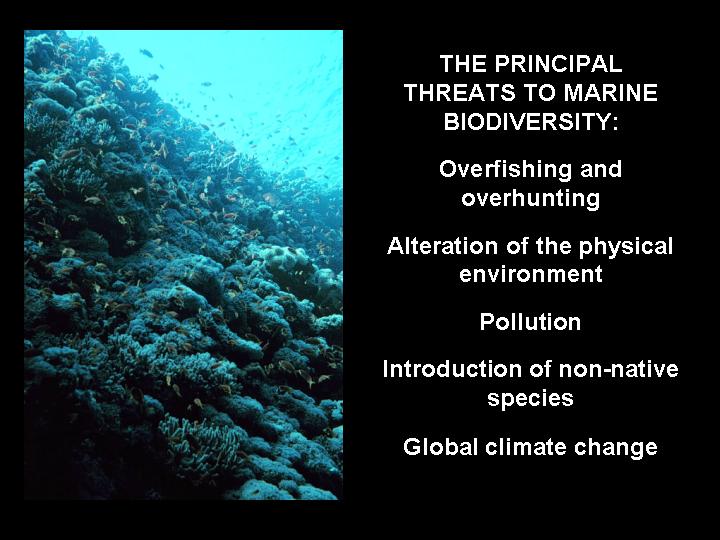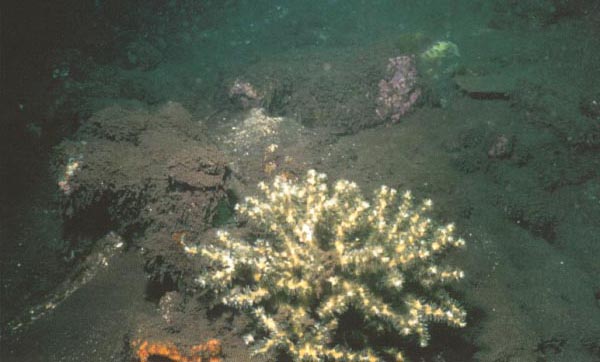



The threats facing coral reefs are broadly similar to the types of threats facing the marine realm as a whole:


Contemporary Threats to Coral Reefs
Disturbances to coral reefs are being recorded at a increasing rate, even allowing for the effects of increased observers. There are probably (at least) as many sources of environmental "stress" on coral reefs as there are coral reefs in the world's shallow tropical seas. Classically (that is to say, over the last 15 years or so) these stressors have been divided into "natural" and "anthropogenic" (of human origin), but this distinction is becoming increasingly artificial as we become more aware of the complex nature of coral reef ecosystems.
Nevertheless we can probably still distinguish a gradient of human influence in coral reef disturbance.
 |
Some disturbances are clearly the
direct result of humankind's interaction with the environment. Oil spills
are perhaps the best examples of these kinds of stresses.
|
|
Early laboratory studies suggested that there was little harm to corals unless they came into direct contact with the oil (e.g., during an extreme low tide). However, longer term studies of chronic oil pollution in Eilat, Israel, demonstrated increased mortality and reduced reproduction. A major spill in Panama in 1986 involving 8 million liters of crude oil led to bleaching, increased mucus production and eventual 76% reduction in coral cover at depths of 0.5-3m (56% at depths of 3-6m). More recently, oil pollution in the Arabian (Persian) Gulf following the Gulf War (1990) led to severe effects on adjacent coastal ecosystems, including coral reefs. |
|